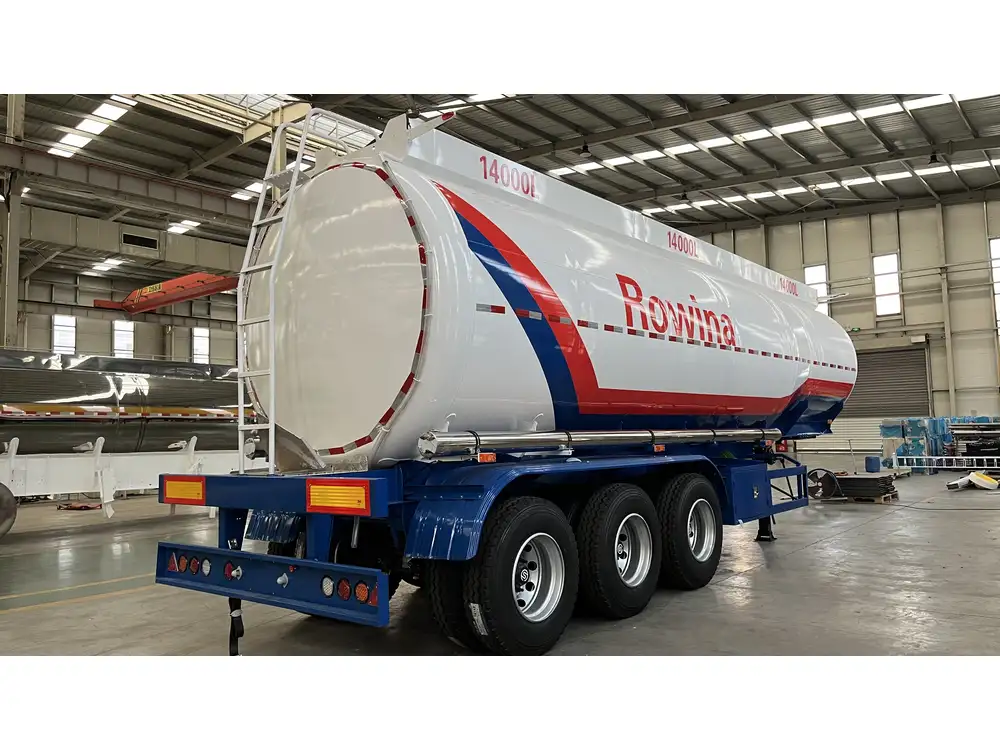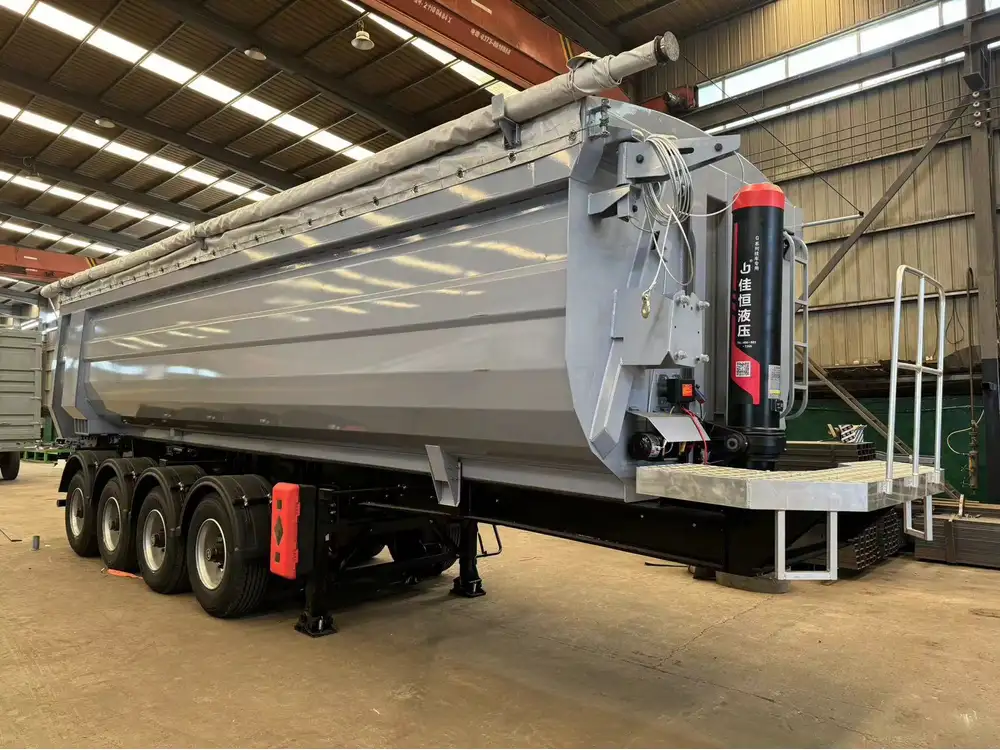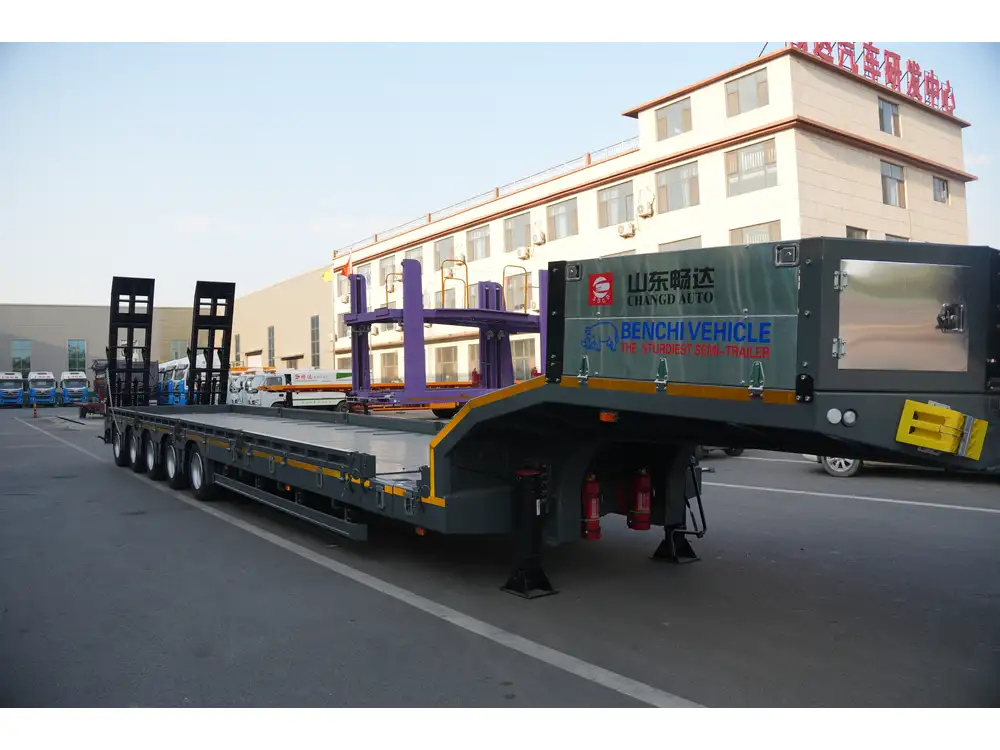When it comes to operating semi-trucks, safety is paramount. One of the common questions that arise among truck drivers and fleet operators alike is whether they should apply the semi truck trailer brakes when parking. This question is crucial for ensuring both the stability of the vehicle and the safety of surrounding areas. In this in-depth guide, we will explore various aspects surrounding this topic, such as the mechanics of semi-truck brakes, potential dangers of not applying them, and best practices for safe parking.
Understanding Semi Truck Braking Systems
Types of Braking Systems
- Air Brakes: The majority of semi-trucks utilize air brake systems, which are powered by compressed air. This type of braking is crucial for managing the heavy loads.
- Electric Brakes: Some trailers use electric brakes, which are activated by the tow vehicle’s brake controller, allowing for synchronized braking between both vehicle and trailer.
Understanding these systems is vital because they dictate how a driver interacts with the braking system during parking.

Components of Air Brakes
- Brake Chambers: Where compressed air is converted to mechanical force to engage the brakes.
- Slack Adjusters: Ensure that the brakes engage effectively by adjusting the distance between the brake pads and drum.
- Brake Drums and Shoes: Provide the friction needed to stop the vehicle.
Grasping the mechanics of these components helps explain the necessity of properly applying brakes when parked.
Reasons to Apply Semi Truck Trailer Brakes When Parking
Stability and Preventing Rollaway
When parking a heavy vehicle like a semi-truck, applying the trailer brakes is crucial for stability.
- Prevents Rollaway: Failing to apply brakes increases the risk of the truck rolling away, especially on inclines.
- Weight Distribution: The trailer’s weight means it can easily move if not properly secured.

Legal and Regulatory Considerations
Drivers should also be aware of regulations and industry standards. According to the Federal Motor Carrier Safety Administration (FMCSA) guidelines:
- Drivers are required to use parking brakes when parking on any grade.
- Failure to comply could result in penalties or liabilities in the event of an accident.
Knowing these legal considerations can protect you and your fleet.
Equipment Preservation
- Brake Wear: Unused brakes can lead to rust and degradation. By engaging them regularly, you prevent potential failures in the future.
- Tire Health: Properly applied trailer brakes can help distribute weight off the tires, preserving them for longer durations.
Safety for Bystanders
- Pedestrian Safety: A parked semi-truck should not pose a threat to pedestrians or other vehicles. Applying brakes mitigates this risk.

Best Practices for Parking a Semi-Truck
Finding the Right Location
Identifying a suitable parking location is crucial. Look for:
- Flat Surfaces: Always aim for flat, stable ground.
- Designated Parking Areas: Stay within marked spaces to avoid legal issues and ensure safety.
The Parking Process: Step-by-Step
Slow Down: Gradually reduce speed as you approach your parking spot.
Action Description Turn on Turn Signals Alert others of your intention to park. Check Mirrors Ensure there are no obstructions. Align the Truck and Trailer: Position the vehicle correctly to allow for smooth trailer backing.
Secure the Load: Make sure the load is properly secured before parking to prevent shifts.
Utilize Chocks: Whenever possible, utilize wheel chocks in addition to brakes, especially on uneven surfaces.

Engaging the Brakes
Here’s how to engage the brakes properly:
- Apply the Trailer Brake First: This will stabilize the trailer before the truck brake is engaged.
- Use the Parking Brake: Once parked, engage the parking brake while in gear to prevent rollaway.
| Brake Type | Application Steps |
|---|---|
| Trailer Brake | Pull the valve to engage. |
| Parking Brake | Pull the cab parking brake to the “on” position. |
Safety Checklist After Parking
- Ensure all lights are functioning.
- Keep clearance for other trucks or vehicles.
- Inspect surroundings for potential hazards.
Conducting Regular Brake Checks
Conduct routine checks on your braking system to ensure its reliability and safety:
- Visual Inspection: Regularly look at brake components for wear or damage.
- Functional Testing: Test brakes in a controlled environment to ensure they respond appropriately.

When Not to Apply Brakes
While it’s generally advisable to apply brakes, there are circumstances where you might opt not to:
- In Extreme Cold: If temperatures are extremely low, applying brakes can potentially cause brakes to freeze, so it’s crucial to consult with equipment manuals for specific recommendations.
- Immediate Exit Required: In cases where immediate movement is needed, assess the situation judiciously.
Common Mistakes to Avoid
Neglecting the Trailer Brake: Many drivers mistakenly focus only on the truck brakes, leaving the trailer unsecured.
Mistake Consequence Failing to set both brakes Increased risk of rollaway. Ignoring slope assessment Potential vehicle movement. Rushing the Process: Always take your time when parking. Hasty actions can lead to unnecessary accidents.
Overusing the Brakes: Excessive brake application without necessity can lead to wear and tear over time.
Additional Considerations and FAQs

What to Do If Your Brakes Fail
In the unfortunate event of a brake failure while parking:
- Find a Safe Area: Try to direct the vehicle to an open space, minimizing collision risks.
- Use Engine Braking: Downshift to lower gears to slow down, if possible.
What are the Indicators of Brake Issues?
- Pulsating Brake Pedals: This can indicate a problem with the brake system or overheating.
- Unusual Noises: Grinding or squealing noises can indicate worn brake pads.
How Often Should You Check Your Brake System?
- It’s advisable to check brakes daily, especially before starting a journey. A visual inspection should be part of a comprehensive pre-trip inspection checklist.

Training New Drivers
Educate new drivers on the importance of applying semi truck trailer brakes when parking. Conduct hands-on training sessions to practice and understand the risks involved.
Conclusion: Safety First When Parking Your Semi-Truck
In the world of semi-truck driving, every little decision can significantly affect safety and efficiency. Applying semi truck trailer brakes when parking is not merely an option but a necessity. Understanding the mechanics, the reasons behind the practice, and following best practices cannot be overstated.
Being diligent in applying semi truck trailer brakes contributes to safety, reduces the risk of damage, and ensures compliance with industry standards. By embedding these principles into your fleet operations, you will significantly enhance the safety and functionality of your trucking business.
As fleet operators, continuous education and awareness of proper parking techniques will empower your drivers and ultimately lead to happier, safer journeys. Remember, the road ahead might be uncertain, but your actions in the parking lot can set the tone for a safe journey.



